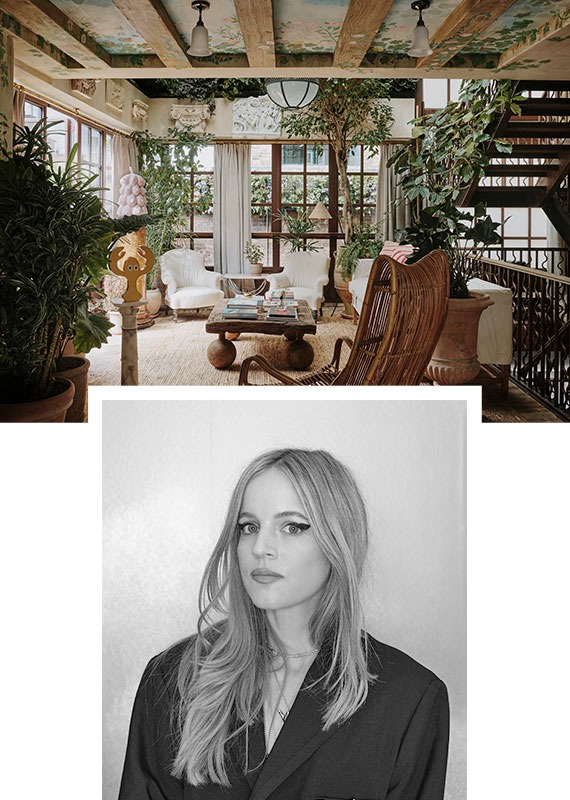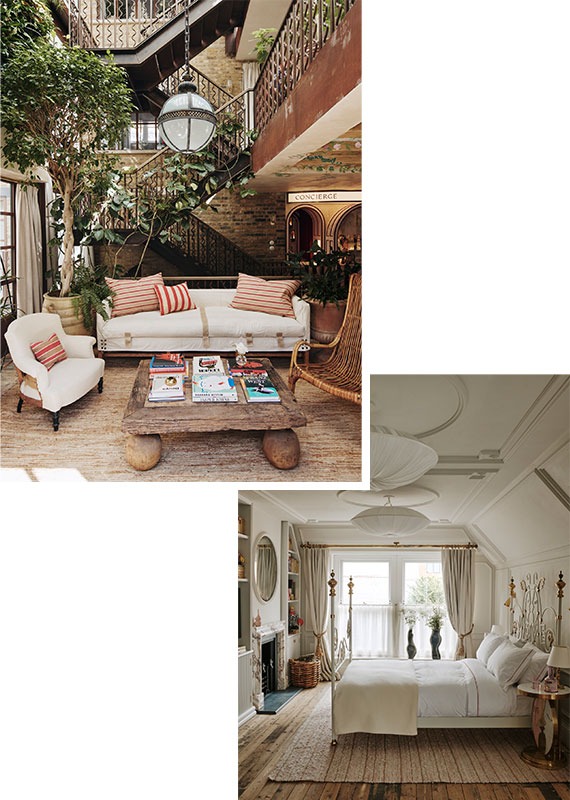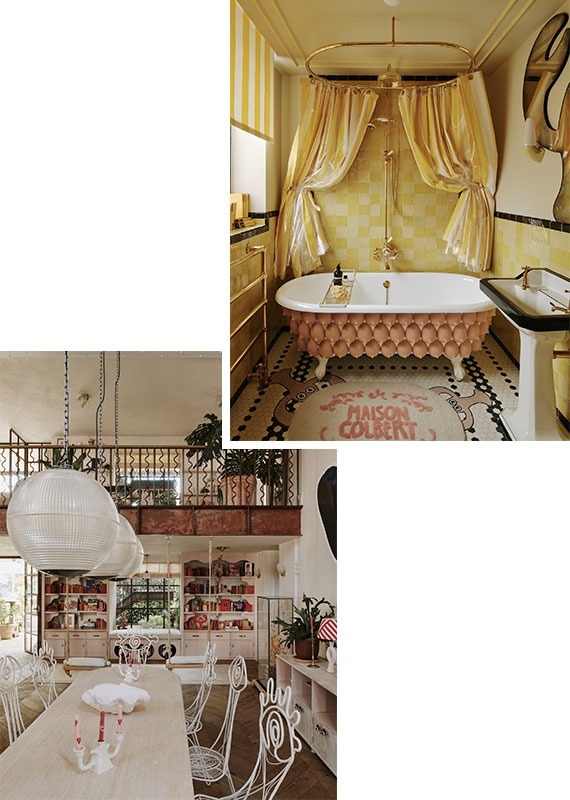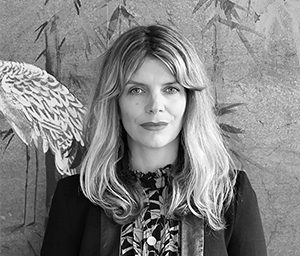Step inside a surrealist live-work space in Spitalfields where sculpture, storytelling and playful symbolism collide

Tucked behind a façade of Victorian shopfronts sits Charlotte Colbert’s home-slash-studio – a layered, theatrical space where dreams, sculpture, and surrealism collide. It’s a building with history and character in every floorboard, but don’t be fooled by its genteel East End exterior. Step through the doors and you’re immediately transported into something closer to a waking fantasy – part film set, part fairy tale, part feminist fever dream – all very Charlotte.
“It’s split between work downstairs and home upstairs,” she explains. “We kept as much of the original design as possible and gave it a twist – from shop frontages to the floorboards and doors. There’s something so nice about seeing the fabric and evolution of a building over time.” It’s a sentiment that sums up the whole space. This is not your average ‘architectural gem’ of clean lines and neutral palettes; rather maximalist storytelling made domestic – a creative sanctuary layered with symbols, sculptural furniture, and the occasional disembodied eyeball.
The renovation was overseen by architect Chris Dyson and visionary interiors duo Buchanan Studio, all close friends of Charlotte and her husband, fellow artist Philip Colbert. “Chris helped us very early on, so he could make sure that our crazy plans were backed by proper engineering,” she says. “And Angus [Buchanan] helped to materialise our madcap interior visions.” That collaborative approach has paid off. The resulting home is a kaleidoscopic mix of colour and form – surreal without tipping into kitsch, playful but deeply thoughtful.
Light is everything. You can be in a box and, if it’s properly lit, it will be interesting. So light is a big focus of mine

Double-height ceilings and an abundance of natural light lend the upper levels a gallery-like atmosphere. “Light is everything,” Charlotte says. “You can be in a box and, if it’s properly lit, it will be interesting. So light is a big focus of mine, not only daylight and windows, but also evening light. It creates the vibe – the way people exchange and interact with one another – a bit like music and smell.”
She’s not wrong. The space does feel immersive. Oversized surrealist sculptures sit alongside hand-crafted furniture and subtly bizarre details: a giant eye, a breast-shaped light fixture… Even the cabinetry has its quirks. “We made tiny eye-shaped handles on the cupboards,” she adds. “A house is always alive – it’s more of a relationship that grows and changes as you do.” Charlotte’s creative identity spans film and visual art, and both disciplines are richly embedded in her home. “I’m interested in stories, the stories we tell ourselves culturally, internally, and to our children, making them who they are,” she says. “Psychotherapy, fairy tales, constant reinterpretation of history are things I’m fascinated by. They infuse all elements of my practice, from film to sculpture, and more recently, design.”
Those ideas are made tangible throughout the house, where recurring motifs – the eye, the uterus, the lobster – surface in sculptural, functional and provocative ways. “Everything around us in our human-made world has been imagined by someone before – this pen, your glasses, the building we’re in. What we imagine today becomes tomorrow’s reality,” she explains. “The eye, which I make into large-scale polished steel public sculptures, has come to symbolise our individual and collective power of visualisation. We’re currently in a battle of images, with big conglomerates pushing forward their visions of the future as fact, but we can, at grassroots level, reclaim that and reimagine futures in whatever way we collectively choose to.”

The house acts as a live-in manifesto for the couple’s creative power. Rooms are defined less by traditional function and more by visual mood. A boob-themed tub – impossible to ignore – takes centre stage in the bathroom. “It’s fun. A motherhood-themed boob bath,” Charlotte enthuses. “It stemmed from my Mameria sculptures – giant, sort of grape-like clusters of breasts that were shown at the Biennale last year. I had lots of nipple moulds, so why not?” The bedroom, meanwhile, is home to Charlotte’s Love Bed, crafted from white wrought iron with golden details, like something out of a modern fable. To the artist, beds are not merely furniture pieces but portals. “I’m very interested in dreams and fairy tales, the archetypal stories we tell ourselves as a species. I’ve already made surrealist beds shown within gallery contexts – one was recently exhibited by [Italian film director] Luca Guadagnino at the Venice Biennale. I think of them as portals, taking us between worlds.”
This creative thinking has found its way into a broader design venture. Born organically from her desire to make pieces for the home rather than buy them, Charlotte Colbert the brand now includes a growing collection of sculptural and surrealist furniture and homewares. “Although the bulk of my practice is sculpture – my first permanent eight-metre public sculpture will be launching in Dallas later this year – and fi lms, which I write and direct, the house pushed me to do interiors because I thought, why get a bed or a chair when I can make my own? This set the train in motion, with shop collaborations, etc.”
The collection includes eye chairs, hand-painted stools and trays, ceramic crockery and embroidered bed linens. “Some are in wrought iron, like the Love Bed, white with golden details, or the blue fairy-tale bed with a face and crown, as well as a range of eye chairs. Others are ceramic, like the Eye Shall Have crockery range, or even hand-painted wood for stools, trays, and cupboards,” she says. “For the show in Venice, Luca Guadagnino asked me to write a poem, which was embroidered on the bed sheets by the wonderful Peter Reed. It was great, and we’ve since decided to do a capsule collection of embroidered sheets together, which is coming out soon.”
The homeware and furniture line can be seen as an extension of Charlotte’s inner universe – wild, symbolic, full of layers – and her home mirrors exactly that. Living and working in a space that’s part studio, part fantasy, part family base sounds intense. “I’m in a constant state of bewilderment,” she confirms. And yet, it works. Beneath the theatrical touches and mythological symbols lies a surprisingly grounded philosophy: light, stories, evolution. Nothing is static. Everything changes. Just like the house itself, which will naturally continue to shift and grow with its owners. “Do I see it as a finished piece? Never,” she says. “A house is always alive.”

